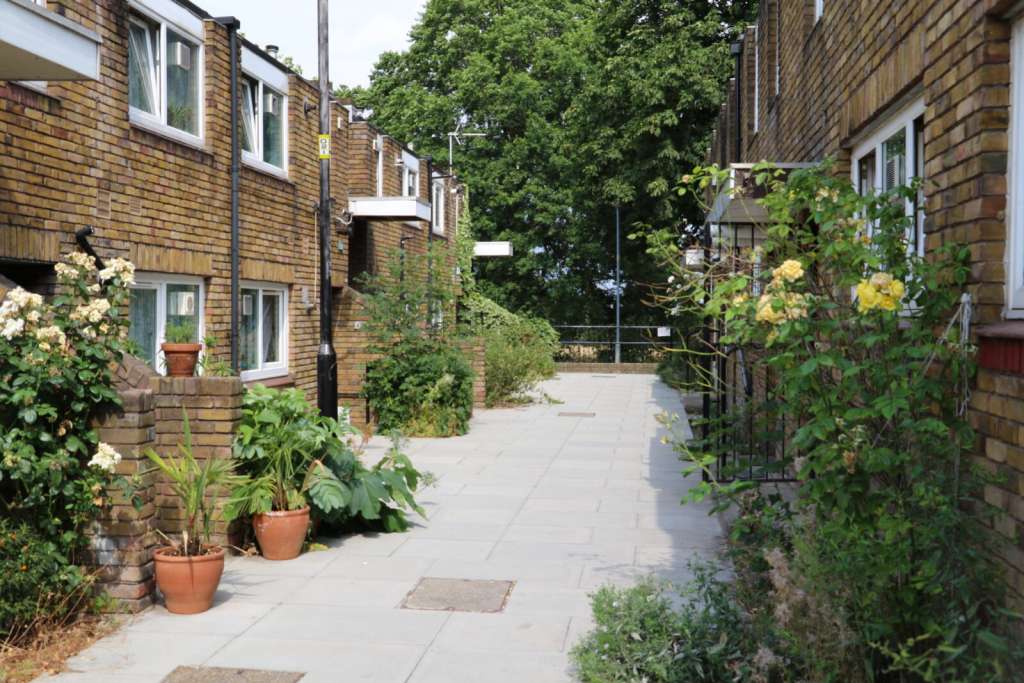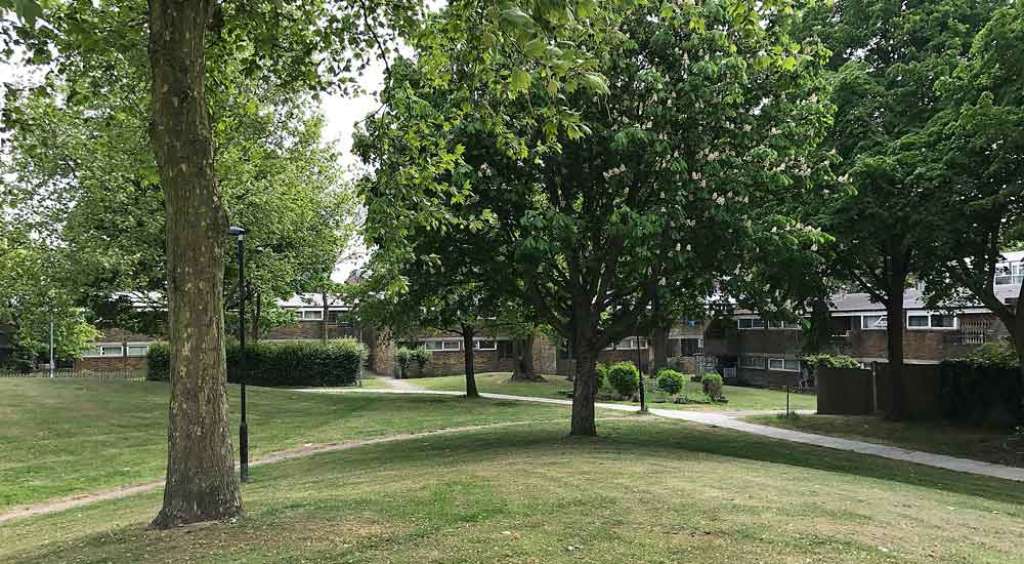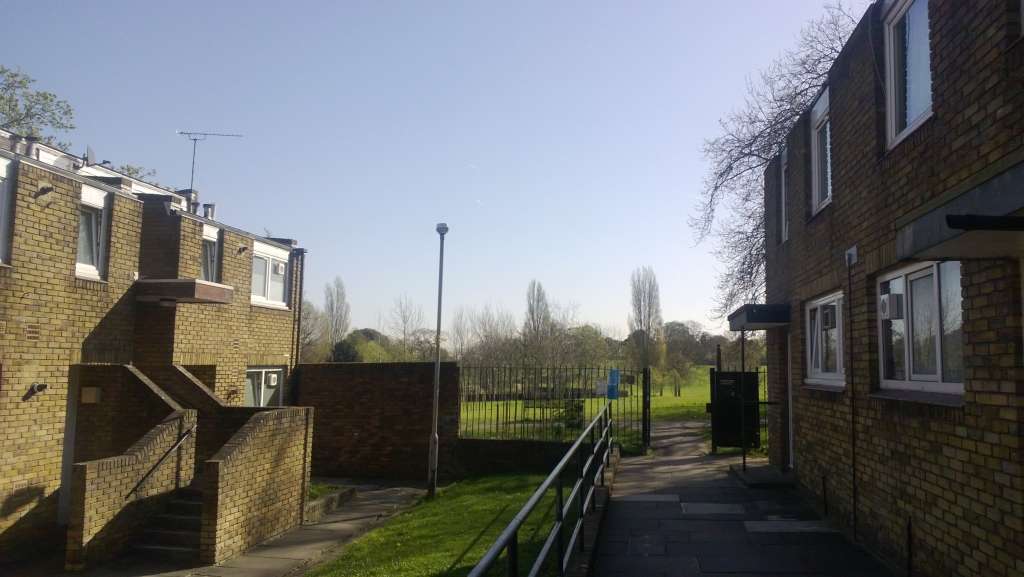PRESS RELEASE: SAVE and C20 call for urgent protection of historic south London garden estate
19th January 2021
Conservation Area boundary review must include unique and much loved 1970s garden estate
SAVE Britain's Heritage, the Twentieth Century Society and Save Cressingham Gardens Campaign are calling on Lambeth Council to include Cressingham Gardens in the Brockwell Park Conservation Area. The boundaries of the conservation area are currently under review and this is a rare opportunity to highlight the special significance of this low rise, beautifully planned South London estate, and to safeguard its future.
The whole of Cressingham Gardens is of remarkable architectural and historic interest and its planning is an outstanding example of a model village layout designed with great imagination and care to provide attractive community living. We have written to Lambeth Council setting out our views. Read the C20 and SAVE letters here.
The estate is already under threat from a recent piecemeal demolition application as well as an ongoing battle between Lambeth and residents over repair and maintenance. For nearly a decade, residents have been fighting demolition plans put forward by Lambeth Council which claims the maintenance and repair of the estate is too expensive.
Henrietta Billings, director of SAVE Britain’s Heritage, says: "Cressingham Gardens is a champion of low rise, 1960s and 70s design that responds to the landscape with great subtlety and sensitivity. It gives residents a public realm integrated with Brockwell Park that really works. The main communal open space within the estate is already within the conservation area - the inclusion of the flats and houses that go with it is obvious and long overdue."
Catherine Croft, director of the Twentieth Century Society, says: “Cressingham Gardens has a complex high density layout which appears effortlessly informal and varied. The simple palate of brick with sheet metal roofing, internal steps, ramps and curving pathways create a strong sense of place, and it is careful not to dominate views from within the park."
Jo Parkes of Save Cressingham Gardens, says: "What a shame that Lambeth Council fails to realise it already has a model estate in Cressingham Gardens - it's a pity that we have to put the case for conservation at all. It wants to demolish something of enormous value to so many and replace it with a development that is inferior, opposed by residents and environmentally damaging. The whole of Cressingham Gardens should be conserved for residents and the wider community, long into the future."
In 2016, in conjunction with local residents, SAVE published a report by heritage consultant and C20 casework committee member Esther Robinson on the special architectural significance of Cressingham Gardens. It demonstrates the importance of the estate and the urgent need for a comprehensive programme of repair and maintenance and conservation area status. Today we are re-publishing the report here.
The C20 also identified the estate as a potential conservation area in a report of 2017. This was the result of research commissioned by Historic England which explored existing and potential conservation area designation for 20th-century structures and landscapes.
History
Designed and built between 1969 and 1979 by a team of Lambeth Council architects led by noted architect and planner Edward Hollamby, the estate was a pioneering example of the contemporary movement in planning and civic architecture away from residential tower blocks to high-density low-rise housing.
The design of the estate is deliberately simple, and it is built of good quality materials. An important element in its success is its thoughtful integration into the setting of neighbouring Brockwell Park. It was kept low-rise to avoid obstructing the views from the park and to enhance the sense of contact with open space for residents.
The central village green extends the landscape of the park into the site, and buildings are arranged so that the lower ones are around this plateau, rising to four-storey blocks around the perimeter. The estate was planned to retain as many existing trees as possible, and a tongue of landscaping extends from the north of the plateau to Tulse Hill, giving views into the site to passers-by and providing a pedestrian route connecting to the nursery school and then on to Brockwell Park. Cars are kept at the perimeter of the site, with paved access to the housing.
It was under Hollamby’s leadership, that Lambeth acquired a national reputation for pioneering public housing schemes, and the estate is noted by council housing expert John Boughton, author of Municipal Dreams, as “one of the finest council estates in the country”.
ENDS
Notes to editors:
1. For more information and images contact Ben Oakley, Conservation Officer at SAVE Britain's Heritage: ben.oakley@savebritainsheritage.org / 07388 181 181.
2. See here for the C20’s latest Press Release.
3. See here for a recent discussion event hosted by the C20 with filmmaker Will Jennings, and Cressingham Gardens resident Tom Keene.
4. Details on the local campaign Save Cressingham Gardens can be found here.
5. SAVE Britain’s Heritage has been campaigning for historic buildings since its formation in 1975 by a group of architectural historians, writers, journalists and planners. It is a strong, independent voice in conservation, free to respond rapidly to emergencies and to speak out loud for the historic built environment.




